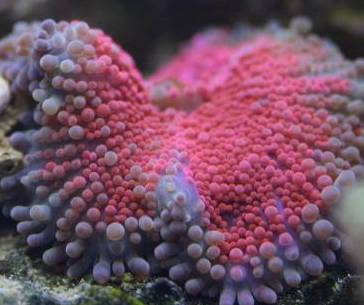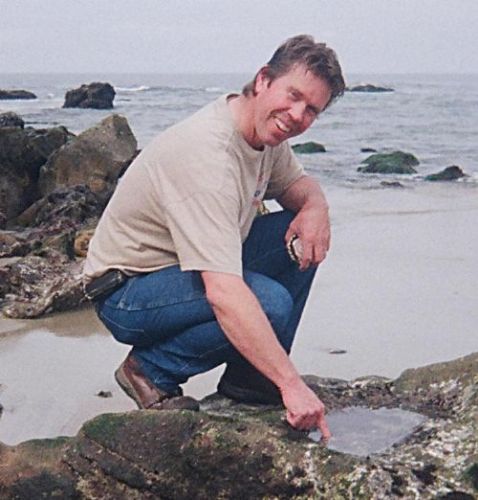| Author |
 Topic Search Topic Search  Topic Options Topic Options
|
Adam Blundell 
Presidency


Joined: June 24 2002
Location: Davis County
Status: Offline
Points: 18526
|
 Post Options Post Options
 Thanks(0) Thanks(0)
 Quote Quote  Reply Reply
 Topic: Dissolving Sand? Topic: Dissolving Sand?
Posted: October 13 2004 at 11:34am |
I realize this will contribute to the ongoing sand debates, but I'm curious about something. HEY JON (and anyone else who cares) what do you think of this....
"Aragonite sand, for example, can dissolve in half in just two years time or sooner (a 6"/15cm bed is reduced to a 3"/7.5cm depth). " (leaving off the author name intentionally for now)
Adam
|
|
Come to a meeting, they’re fun!
|
 |
Jake Pehrson 
Admin Group


Joined: June 13 2002
Location: Murray, UT
Status: Offline
Points: 4279
|
 Post Options Post Options
 Thanks(0) Thanks(0)
 Quote Quote  Reply Reply
 Posted: October 13 2004 at 11:46am Posted: October 13 2004 at 11:46am |
I think this is "crazy talk". Although I do believe that the sand dissolves. I don't believe anywhere near the rate he is talking about.
I have had a 7" sand bed in my tank for about 5 years now. I have only lost about an inch and have never added more sand.
|
|
|
 |
jfinch 
Guest


Joined: March 06 2003
Location: Pleasant Grove
Status: Offline
Points: 7067
|
 Post Options Post Options
 Thanks(0) Thanks(0)
 Quote Quote  Reply Reply
 Posted: October 13 2004 at 11:55am Posted: October 13 2004 at 11:55am |
I like this subject... 
I don't think that is a common occurence, do you? My sand bed has not changed depth in the 9 months I've had it. Anyone here notice their sandbed volume decrease in half in only two years?
I'm convinced, because everything I've ever read seawater chemistry books says, that seawater is supersaturated with regard to CaCO3 (aragonite) by almost a factor of 300%! That means that sand will not dissolve unless one of three things happens. First, the calcium level drops very very low... like down around 100 ppm. Second, the alkalinity level drops very very low... like down around 1 meq/l. Or finally, if the pH of the water is reduced to the mid to low 7s. Hopefully, none of our tanks are in those conditions. But, an actively denitrifying sandbed can lower the pH enough to dissolve sand. But I think the fact of the matter is that this mechanism doesn't occur to a great extent. I mean think about it, if it did, why would so many people need calcium reactors (with CO2) ??? Most people with reactors also have sandbeds and three inches of sand is probably more then their calcium reactor would dissolve in that same time.
What do you think?
|
|
|
 |
Jared 
Guest


Joined: November 25 2002
Location: United States
Status: Offline
Points: 692
|
 Post Options Post Options
 Thanks(0) Thanks(0)
 Quote Quote  Reply Reply
 Posted: October 13 2004 at 11:56am Posted: October 13 2004 at 11:56am |
|
I've never seen it dissolve any where near that rate, and if it did I'd say great. Anything that keeps my calcium/alk levels up is good, I can always go dig up more sand.
Edited by Jared
|
|
Jared Neilsen
Lehi, Utah
|
 |
jfinch 
Guest


Joined: March 06 2003
Location: Pleasant Grove
Status: Offline
Points: 7067
|
 Post Options Post Options
 Thanks(0) Thanks(0)
 Quote Quote  Reply Reply
 Posted: October 13 2004 at 11:57am Posted: October 13 2004 at 11:57am |
|
Oh... I agree with Jake.
|
|
|
 |
Adam Blundell 
Presidency


Joined: June 24 2002
Location: Davis County
Status: Offline
Points: 18526
|
 Post Options Post Options
 Thanks(0) Thanks(0)
 Quote Quote  Reply Reply
 Posted: October 13 2004 at 12:18pm Posted: October 13 2004 at 12:18pm |
Jon- I'm sure the author is saying that the biological organisms in the sand are eating the sand, and they are causing the dissolving effects.
I've heard your arguement many times on how our sand beds can't dissolve, but I think you are missing the idea. This isn't a chemistry approach, it is a biology approach. Do you think the worms in your sand can excrete large amounts of sand?
Not saying I disagree with you. I think I do agree with you and with Jake. I'm just trying to see if this claim has any merit to it. If indeed the sand is dissolving (even at a much slower rate than is being claimed) that has a huge impact on my views of sand beds.
Adam
|
|
Come to a meeting, they’re fun!
|
 |
Carl 
Guest


Joined: September 17 2003
Location: United States
Status: Offline
Points: 1346
|
 Post Options Post Options
 Thanks(0) Thanks(0)
 Quote Quote  Reply Reply
 Posted: October 13 2004 at 12:50pm Posted: October 13 2004 at 12:50pm |
|
What were the parameters of the "test"? Did the author start out with a dry bed and remeasured after the water was added? Was there settling? Was the sand bed leveled before and after? Could they have started out with a large grain that could have settled and/or become crushed to fine sand? Maybe gremlins were sneaking in at night and stealing their sand? There's a big market for LS in Gremlin Land.
|
|
In Syracuse
"I believe that forgiving them is God's function. Our job is simply to arrange the meeting." - Gen. H. Norman Schwarzkopf
|
 |
Adam Blundell 
Presidency


Joined: June 24 2002
Location: Davis County
Status: Offline
Points: 18526
|
 Post Options Post Options
 Thanks(0) Thanks(0)
 Quote Quote  Reply Reply
 Posted: October 13 2004 at 12:59pm Posted: October 13 2004 at 12:59pm |
There was no experiment. This is just what was stated (I'm guessing from observation?).
Adam
|
|
Come to a meeting, they’re fun!
|
 |
smatney 
Guest


Joined: July 08 2004
Location: United States
Status: Offline
Points: 1835
|
 Post Options Post Options
 Thanks(0) Thanks(0)
 Quote Quote  Reply Reply
 Posted: October 13 2004 at 1:05pm Posted: October 13 2004 at 1:05pm |
|
I know there are some electrolytes in the sand (calcium, sodium) that dissolve over time but in half - no way.
|
|
Susan Matney
Farmington, UT
|
 |
jfinch 
Guest


Joined: March 06 2003
Location: Pleasant Grove
Status: Offline
Points: 7067
|
 Post Options Post Options
 Thanks(0) Thanks(0)
 Quote Quote  Reply Reply
 Posted: October 13 2004 at 1:08pm Posted: October 13 2004 at 1:08pm |
I'm sure the author is saying that the biological organisms in the sand are eating the sand, and they are causing the dissolving effects.
Is he saying that? I know that's not what people like Rick Greenfield says. Right on the bag of Caribsea it says that it "buffers the water at pH=8.2". That is hogwash! They also sell a product called Aragomight and Aragomilk as a calcium and alkalinity additive... Hogwash again! This list can be extended...
I don't have any critters in my sandbed that could fit a grain of sand in it's mouth, do you? (ok, I do have a cucumber that eats sand, but...). It doesn't matter if the mechanism is biological or chemical it still must obey natural laws. There are some very interesting aspects of bacterial "biofilms". For one thing, many bacteria can form very small micro environments where the pH can be substantially lower then the surrounding water. Perhaps this is how sand dissolves. I'm not claiming that sand in a tank does not dissolve, what am claiming is that the pH needs to be pretty low for it to do it. Sand just sitting in a glass of seawater will not dissolve. Some biological activity needs to create an environment conducive to dissolution...
In short... I think this is all a bunch of "crazy talk".
|
|
|
 |
Adam Blundell 
Presidency


Joined: June 24 2002
Location: Davis County
Status: Offline
Points: 18526
|
 Post Options Post Options
 Thanks(0) Thanks(0)
 Quote Quote  Reply Reply
 Posted: October 13 2004 at 1:19pm Posted: October 13 2004 at 1:19pm |
Hmmmm..... unfortunately I still agree with you...... but I wish I could agree and see the claims on the other side.
Adam
|
|
Come to a meeting, they’re fun!
|
 |
jglover 
Guest


Joined: February 10 2004
Location: United States
Status: Offline
Points: 576
|
 Post Options Post Options
 Thanks(0) Thanks(0)
 Quote Quote  Reply Reply
 Posted: October 13 2004 at 1:37pm Posted: October 13 2004 at 1:37pm |
Hey my sand dissolves like no other it gets stirred up and right down my overflow and into my sock a week later it's down the washing machine drain. Maybe that is what he means by biological dissolving  I wonder what the situation was where he saw that kind of dissintegration??? My opinion he needs to singularize the variable before coming to drastic conclusions.
|
 |
Jake Pehrson 
Admin Group


Joined: June 13 2002
Location: Murray, UT
Status: Offline
Points: 4279
|
 Post Options Post Options
 Thanks(0) Thanks(0)
 Quote Quote  Reply Reply
 Posted: October 13 2004 at 2:18pm Posted: October 13 2004 at 2:18pm |
|
I have to agree with Jon. Adam, what organisms are eating our sand?
|
|
|
 |
Adam Blundell 
Presidency


Joined: June 24 2002
Location: Davis County
Status: Offline
Points: 18526
|
 Post Options Post Options
 Thanks(0) Thanks(0)
 Quote Quote  Reply Reply
 Posted: October 13 2004 at 3:32pm Posted: October 13 2004 at 3:32pm |
Oh I think just about everything in the sand is eating it. I think bristle worms, cucumbers, mysis, and everything are eating it. They just eat very small amounts. Yes, I know they don't fit sand in their mouths, but I think they are eating small organics and small pieces broken off by bacteria and the like.
I could be wrong. I'm also not saying they eat much. But worms (bristle) burrow into live rock by eating away the rock. I'm sure they munch on parts of sand.
But I still can't imagine the sand dissolving at anywhere near that rate.
Adam
|
|
Come to a meeting, they’re fun!
|
 |
Weimers 
Guest


Joined: January 01 2004
Location: United States
Status: Offline
Points: 2080
|
 Post Options Post Options
 Thanks(0) Thanks(0)
 Quote Quote  Reply Reply
 Posted: October 13 2004 at 3:36pm Posted: October 13 2004 at 3:36pm |
|
Silly research puppies! Okay, they might be right. But in order to prove the point, they would have to nullify every variable they could think of. I've watched my hermit crabs tear apart a thin shell. I'd swear they were eating it (but what do I know). Maybe they had fish with Sand Munchies. Kind of like popcorn or Pringles - you can't eat just one.
|
|
Renee and Damon Weimer
Tankless in Hawaii
|
 |
Shane H 
Presidency


Joined: March 09 2003
Location: Brigham City
Status: Offline
Points: 7921
|
 Post Options Post Options
 Thanks(0) Thanks(0)
 Quote Quote  Reply Reply
 Posted: October 14 2004 at 8:21am Posted: October 14 2004 at 8:21am |
What type of digestive fluids are sloshing around inside my sea cucumber? I always assumes that as it consumed sand - it simply cleaned away any algae then evacuated clean sand. Maybe some of the sand is dissolving during this process.
I wonder if I could stick my pH probe up .... 
|
 |
Jake Pehrson 
Admin Group


Joined: June 13 2002
Location: Murray, UT
Status: Offline
Points: 4279
|
 Post Options Post Options
 Thanks(0) Thanks(0)
 Quote Quote  Reply Reply
 Posted: October 14 2004 at 9:13am Posted: October 14 2004 at 9:13am |
 Shane H wrote: Shane H wrote:
What type of digestive fluids are sloshing around inside my sea cucumber? I always assumes that as it consumed sand - it simply cleaned away any algae then evacuated clean sand. |
I agree with Shane. Most organism do not eat the sand, they are simply eating the stuff off the sand. Any digested sand would be minimal IMO.
Has anyone in the club ever had sand dissolve at the rate mentioned above? ....... I didn't think so.
Edited by Jake Pehrson
|
|
|
 |
Adam Blundell 
Presidency


Joined: June 24 2002
Location: Davis County
Status: Offline
Points: 18526
|
 Post Options Post Options
 Thanks(0) Thanks(0)
 Quote Quote  Reply Reply
 Posted: October 14 2004 at 9:34am Posted: October 14 2004 at 9:34am |
Jake- I don't think anyone in America is near that rate.
Adam
|
|
Come to a meeting, they’re fun!
|
 |
Mark Peterson 
Paid Member


Joined: June 19 2002
Location: Murray
Status: Offline
Points: 21436
|
 Post Options Post Options
 Thanks(0) Thanks(0)
 Quote Quote  Reply Reply
 Posted: October 14 2004 at 9:39am Posted: October 14 2004 at 9:39am |
I agree with how this whole thread has developed.
1. It takes an acidic Ph (probably below 6.5) to actually dissolve Aragonite.
2. Smaller critters like Bristleworms can and do ingest aragonite sand (I've witnessed it plenty) and though they were aiming for the biofilm, certainly some arogonite dissolved in their acidic gut.
3. Aragonite substrate cannot dissolve that fast in the typical reef aquarium.
Here is my 2 cents:
A DSB of greater than 4" allows more of this dissolving than the more typical 2-3" sand bed. This is where Oolitic is important in creating low pH conditions in a not so deep DSB
Smaller particles of Arogonite, like the white dust some may think is so offensive, is actually useful because it is able to dissolve more easily when conditions are right, simply because of it's surface area and that more organisms can ingest it where it dissolves much faster. 
|
Reefkeeping Tips, & quick, easy setup tricks:www.utahreefs.com/forum/forum_posts.asp?TID=9244 Pay it forward - become a paid WMAS member 
|
 |
jfinch 
Guest


Joined: March 06 2003
Location: Pleasant Grove
Status: Offline
Points: 7067
|
 Post Options Post Options
 Thanks(0) Thanks(0)
 Quote Quote  Reply Reply
 Posted: October 14 2004 at 9:50am Posted: October 14 2004 at 9:50am |
It takes an acidic Ph (probably below 6.5) to actually dissolve Aragonite.
I'd say below pH = 7.5, but if you're keeping your calcium and alk levels higher then NSW, which many of us do, then it would be even lower.
Seriously, if someone is seeing half of their sandbed dissolve in 2 yrs then their system should be studied to find what husbandry habits are causing this. At that rate, many people with calcium reactors wouldn't need them... all they would have to do is drop in a bad of sand every couple yrs and let biology take over.
|
|
|
 |